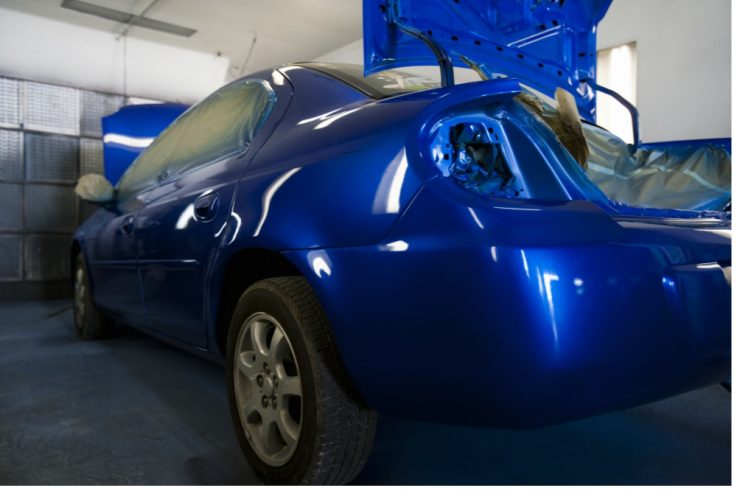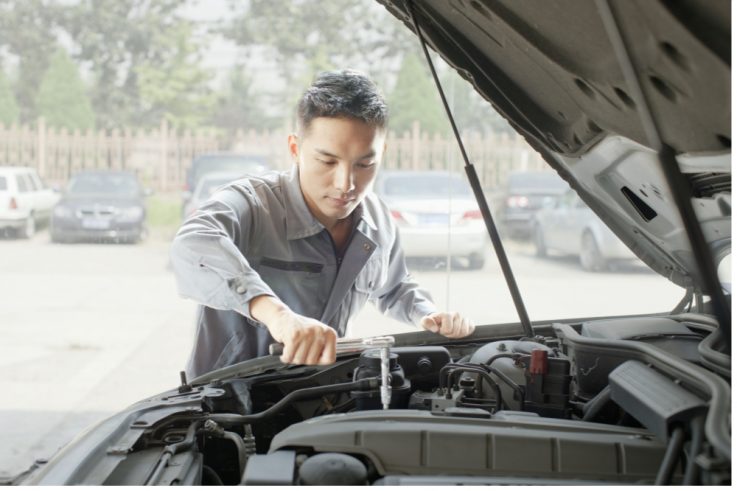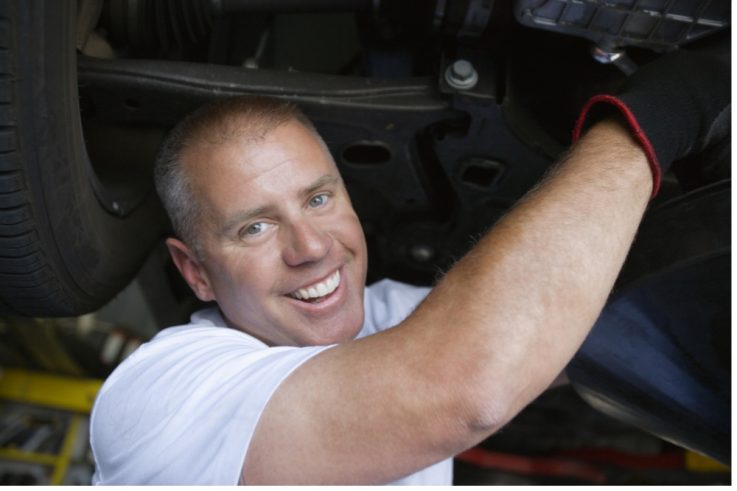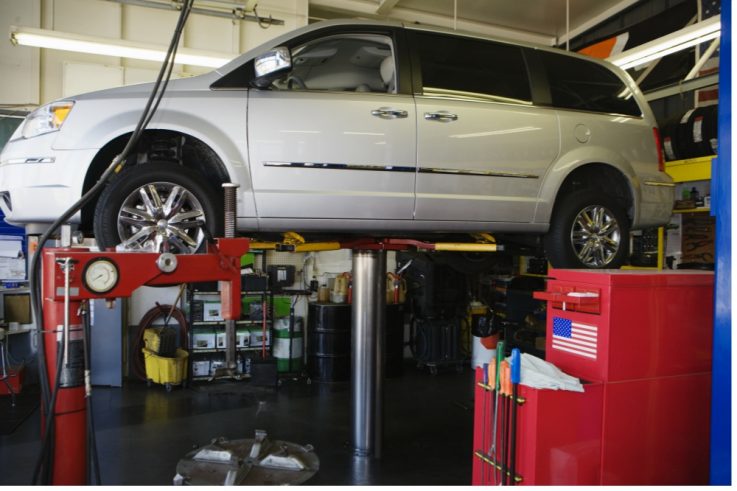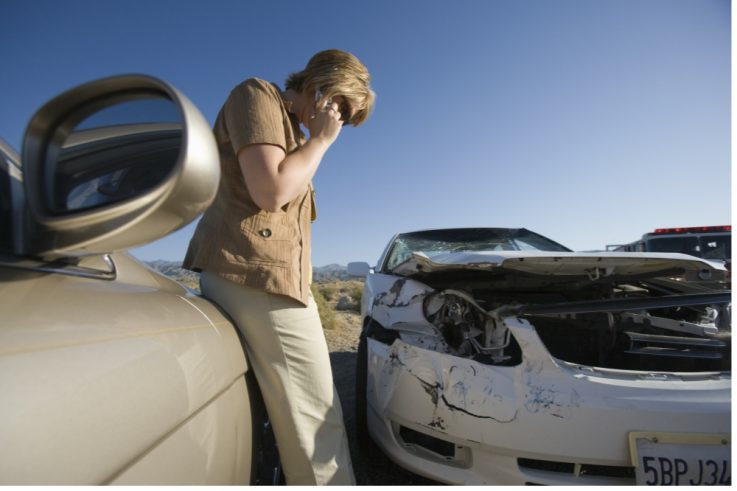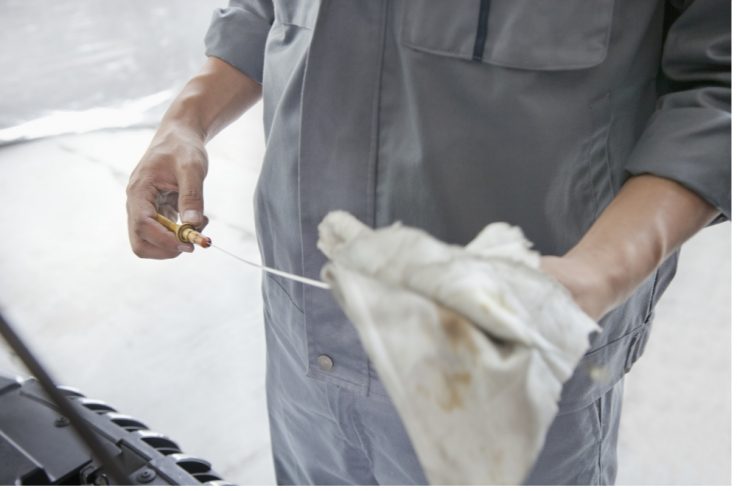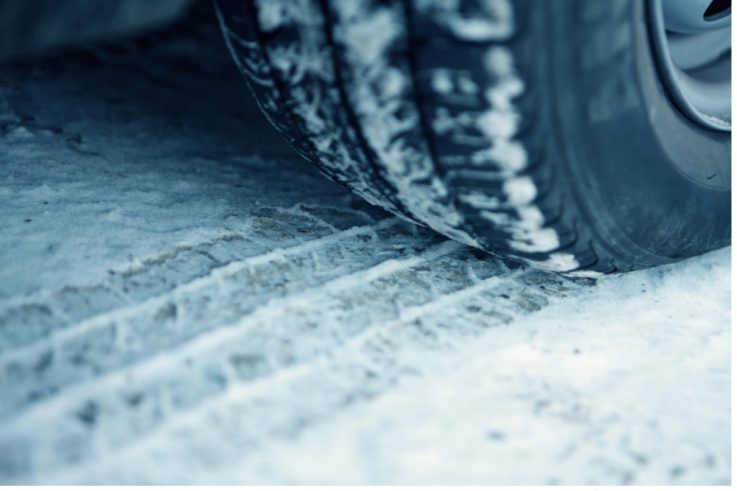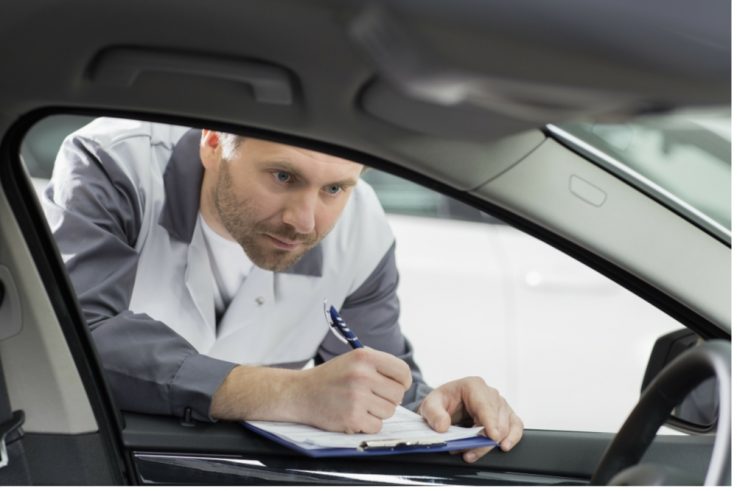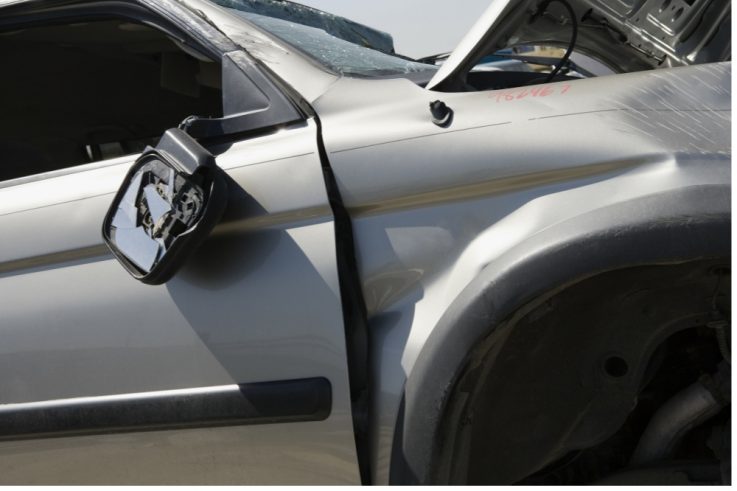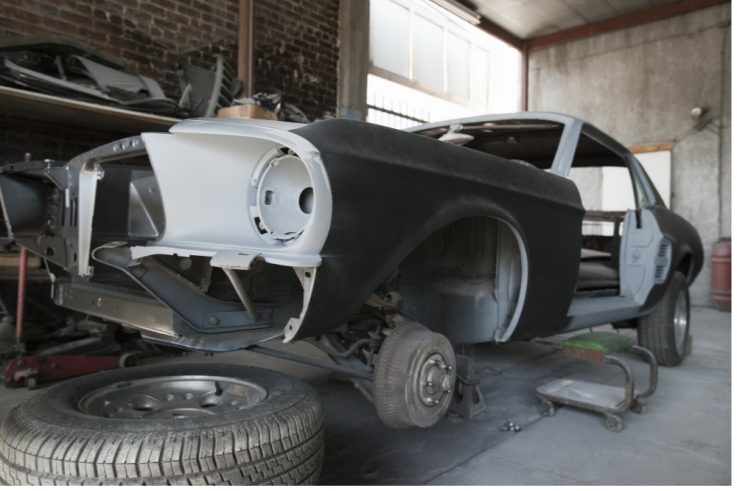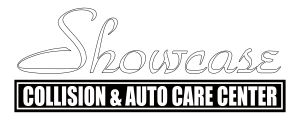- by ShowcaseCollisionInc
- 0
What Are The Most Common Services Autorepair Shops Provide?
Of necessity, autorepair shops must have the knowledge and skillsets to perform almost all types of repair work on vehicles, because the only other line of defense is the actual dealership where the car was purchased.
When the dealer does not service the vehicles they sell, there is literally no other recourse than to engage the services of a qualified auto repair shop. That requires a working knowledge of how cars work in general, and how specific makes and models perform as well.
That can amount to a considerable body of knowledge, but autorepair shops are generally up to the task and can deliver whatever kind of repair work is called for on a vehicle that needs repairs or normal maintenance. The need for this vast amount of knowledge and experience is one reason why labor costs from skilled auto technicians tend to be so high, and why you have to pay so much.
Here are some of the most common services which autorepair shops must be capable of delivering to customers.
Most Frequently Needed Auto Repair Services
Since most cars operate on the same basic principles, the same kinds of repairs are generally necessary, especially given the fact that the moving parts tend to be similar across all vehicles, and the parts which undergo the most wear and tear are similar in all vehicles.
That being the case, here are some of the parts and systems which most frequently need attention on today’s vehicles:
- Auto maintenance – ordinary maintenance is often necessary, to service belts, fluid levels, moving parts, and sometimes even tires which can become worn with mileage
- Tune-ups – tune-ups are necessary so that a vehicle can continue to run efficiently; generally, it is necessary to change spark plugs and spark plug wires in order to maintain maximum performance
- Diagnostics – computer diagnostics take much of the guesswork out of identifying vehicle problems, by communicating directly with the vehicle’s electronics system to pinpoint any performance issue the car might have
- Warranty work – manufacturers will generally guarantee their parts for a certain number of years, and if any repairs or replacements are needed, they will be paid for by the vehicle maker
- Oil changes – one of the most common maintenance tasks, oil changes are necessary so a vehicle can have clean oil circulating through the engine block, lubricating all the important components there
- Radiator flush and fill – periodically, it might be necessary to flush out the radiator and install fresh fluid to ensure that the vehicle doesn’t become overheated during operation
- Alignments – front ends often need re-alignment when installing new tires, and sometimes after periods of prolonged usage, so as to keep the vehicle traveling in a straight direction
More services you might also need:
- Anti-lock system diagnosis – brakes can be a little finicky these days, and in order to find out exactly what’s happening in your ABS system, it is sometimes necessary to diagnose the issue and take action accordingly.
- Suspension system service – the suspension system consists of your tires, springs, shock absorbers, and linkages that connect your vehicle to the wheels, and if anything is amiss here, you’ll notice it right away in the performance of your vehicle
- Shock and strut replacement – these are responsible for the cushioning and comfort of your ride, and when anything is out of whack here, you will notice that the ride is rougher and more bouncy
- Starter and alternator repairs – any problems with your starter might prevent your car from starting up, and make it non-operational, whereas alternator issues may cause the battery to lose its charge, or to prevent the proper distribution of electricity throughout the vehicle
- Axle work – there are three different types of axles in your car, all of which are responsible for supporting the weight of your vehicle, and for rotating the wheels of the car
- Battery replacement – when a battery becomes drained, it generally is advisable to completely replace it, because otherwise, you may encounter reliability issues, and might not be able to start your car
- Tire replacement – having fresh tires is a critical factor in the safe operation of your vehicle since they are the one component that actually touches the road, and which keep you driving safely on any roadway
Also:
- Transmission fluid service – usually with this kind of service, you’ll have the pan gasket, filter, and fluid itself all changed out. There are actually some vehicles that have their transmissions ‘sealed for life’, and these vehicles do not require transmission fluid service
- Air conditioning recharge – when your air conditioning system isn’t functioning properly, the most common cause is that it needs a recharge, and your auto repair shop can do this by injecting fresh refrigerant into the system so you can enjoy conditioned air once again.
Services Offered by Showcase Collision & Auto Care Center
At Showcase, we can provide both collision work and auto repairs at our two locations. For the best collision work in the region, bring your vehicle into our Warren, MI shop, and for the finest in auto care, you should bring your vehicle to our Sterling Heights, MI shop.
Here are some of the services we specialize in at these two locations:
- Collision Work – we can do frame straightening and replacement, hail, and storm damage, repairs of dents, rust repair, complete restorations, computerized color matching, refinishing, mobile estimates, pickup and delivery service, claims assistance, windshield repairs or replacements, vandalism damage, theft damage repairs, custom hoods, detailing, and paintless dent repairs.
- Auto Care – we have a full line of auto repair services which we can provide for you, including battery replacements, tire replacement, air conditioning repairs, brake repairs or replacements, exhaust system repairs, engine diagnostics, suspension repairs, transmission repairs, radiator repairs, and fuel system repairs.
Whenever you have any question about whether or not we can repair some problem your vehicle has, please contact us and talk with our friendly representatives to set up an appointment for repairs, or to find out the answer to a question you might have.
- by ShowcaseCollisionInc
- 0
Tips for Getting An Accurate Car Damage Estimate
Getting an accurate car damage estimate for the work you need to do on your car after an accident can be critical if you want to avoid being fleeced. There are a great many collision shops where you can be drastically overcharged for parts and service, so it’s up to you to do your homework and make sure that any estimates are in the ballpark of reasonableness.
One of the first things you should do is to find out the actual value of your vehicle, as it stood before your accident. There are a couple of references you can consult in this regard, including the Kelley Blue Book and the National Association of Automobile Dealers NADA Guide.
Of course, if your insurance carrier decides that the cost of repairing your vehicle is more than the car is worth, i.e. the car has been totaled, then they won’t pay for the repairs.
It will be up to you to make a case for demonstrating that the pieces of the car are worth more than the book value, thereby bumping up your repair settlement. In order to do that, you’ll have to provide your insurance carrier with such evidence as mileage records, service history, and possibly testimony from local mechanics. This kind of support should convince your insurance carrier that your car is worth more than a typical vehicle from its make and model class.
Know the Process
It’s important that you understand how the claims repair process works so that you can go about getting the most accurate estimate for any repairs you need on your vehicle. Whenever you file a claim with your insurance company, they will probably put you in touch with a claims adjuster who will confirm your loss, and make at least an initial determination on what it might cost to restore the vehicle to its former condition.
Keep in mind that this initial car damage estimate is merely a benchmark, and it’s not intended to be a final claim payment at all. The insurance company doesn’t expect you to simply accept the estimate made by their adjuster, until after you have personally established that this estimate will indeed cover all the costs of any necessary repairs. The insurance company will also expect you to obtain one or more estimates from your local mechanic or car dealer so that you can compare them to the estimate made by their claims adjuster.
A word of warning
When you do provide these estimates to your insurance carrier, it’s entirely likely that they may choose to accept the lowest bid. From the perspective of the insurance company, they’re trying to avoid paying for an inflated repair bill, but that may not synchronize with what your own perspective is. If you decide to take one of the higher estimates, prepare to justify to the insurance company why that higher estimate is necessary, and why it’s more appropriate than the low bid.
Your insurance carrier cannot force you to get your car at a shop of their choice, but they can ask you to look for other estimates if they feel that the quotes you gave them are too high. There is always room for negotiation if you believe that the preferred estimate by your insurance carrier is too low, and will not cover the cost of repairs adequately. Of course, in this case, you’ll need to justify to the claims adjuster why you feel a higher estimate is more appropriate.
Tips for Accurate Estimates
There are some things you can do which will help you to get the most accurate estimates for any repair work necessary following an accident. The first of these is to do whatever research is appropriate on the collision shops that you’re considering to have the work done.
Make sure that any estimates you get are from reputable repair shops which have a history of doing top-notch, high-quality work. Read online reviews and seek referrals from other people who may have had collision work done at those shops.
Ideally, you should have at least three written estimates from different collision shops, and each of these estimates should include a breakdown of all the parts and labor which will be necessary to restore your vehicle. Another tip is to avoid making a decision based on a single car damage estimate. The reason this is wise is that there can be a great deal of variance between estimates, since one mechanic may discover hidden repairs which are necessary, while another one overlooks them.
If your claims adjuster recommends a collision shop where the estimate is substantially lower than other places, this should be a red flag to you, and you should definitely conduct more research. Your best bet is to do a line-by-line comparison of the details on any estimate to see where the differences lie, and then to ask questions about why they omit or include certain parts and services.
One last tip for you to keep in mind is that you don’t necessarily have to wait for your insurance company to assign a claims adjuster to your claim.
In conclusion
If you need your vehicle back as soon as possible, it might be worth your while to pay for the repairs yourself and then claim any reimbursement from your insurance carrier. This is a little risky since getting back the full amount for completed repairs is pretty difficult.
To protect yourself, it’s always best to pay close attention to everything listed on a detailed estimate and to work closely with your insurance company to get adequate reimbursement for all necessary repairs. By acquiring multiple estimates, you can ensure that you get the most accurate possible car damage estimate for repair work, and you’ll also be reasonably sure that damage that is not visible has been accounted for. This can be extremely important because there are often internal repairs necessary that are not apparent to the naked eye.
- by ShowcaseCollisionInc
- 0
Preventing Auto Repair Problems
You need to have a good working knowledge of how your vehicle actually works when you need repairs, and how to identify many of the most common auto repair problems.
If you haven’t already got a trusted mechanic, you should make every effort to find one, and make sure you ask the right questions whenever you work with that individual. You should also be aware of your rights as a consumer, so that an unscrupulous repair person doesn’t take advantage of you, and fleece you out of your hard-earned money.
Here’s the best way to head off any auto repair problems which would otherwise be necessary.
Avoiding Problems
Even if you’re not particularly interested in automobiles, it’s worth your while to have at least a general understanding of how they work, because this will really help you to head off all kinds of repair problems. You will be able to identify quite a few vehicle problems simply by conducting a regular visual inspection, listening for unusual noises, smelling odors that are not common, and paying attention to the way your vehicle handles as you drive around the neighborhood every day.
Visual Inspection
It might not mean much if you see a drop of fluid under your vehicle every now and then, but if you see a wet spot beneath your vehicle, it should be checked out.
Even worse, when you notice a puddle that has accumulated under your car, that calls for immediate action and should be investigated right away. If you notice a yellowish-green, fluorescent orange, or pastel blue fluid… any of these could be an indication that your engine has overheated, or that you have an anti-freeze leak:
- An antifreeze leak could be attributable to a cracked hose, a leaky radiator, or a water pump.
- If you notice a black, oily fluid or one that’s dark brown, that’s usually an indicator that your engine is leaking oil, and the problem could be a worn gasket or a bad seal.
- Reddish fluid under your vehicle is most likely an indication that you have a leak in your power steering system or in the transmission somewhere.
- If you see a puddle of clear water under your vehicle, that’s not usually an indicator of any kind of problem, and it’s most often a harmless accumulation of condensation which came from your air conditioner.
Unusual Odors
You’d be surprised how many auto repair problems can be identified by actually smelling them while your car is operating. For instance, if you smell something like burnt toast, this is often an indication that you have insulation that is burning somewhere, or that your car has an electrical short. It would be best not to drive the vehicle until the actual problem has been diagnosed.
When you smell the unmistakable odor of rotten eggs, this is very often an indication that the catalytic converter or some other emission control device has failed. Diagnose the problem as quickly as possible and repair it if necessary.
When you smell a thick, acrid order, that is generally an indication that oil is burning, and you should take some time to look for signs of an oil leak.
If you smell gasoline vapors after a failure to start the engine, this usually indicates that you have flooded the engine. When you notice this odor, wait a few minutes before attempting to restart the engine.
If you continue to smell gasoline, there could be a leak in your fuel system, and if this is the case, it will be a dangerous situation that requires prompt attention.
When you smell a chemical odor or something like burning resin, that could be a sign of an overheated clutch or overheated brakes. If you’ve been driving on mountain roads, you might need to let your brakes cool before proceeding. When you smell a kind of sweet, steamy odor, that may be a good indication of a coolant leak.
Finally…
Check your temperature gauge for an overheating indication, and if you don’t see one, it could be that the engine itself is overheated. If you suspect this is the case, you should quickly pull over at the nearest repair station and have it checked out.
Strange Sounds
You can often identify auto repair problems simply by paying close attention to the sounds that you hear coming from it. When you hear a squeal which is a shrill, sharp type of noise, it could indicate that you have worn power steering, or that you have a loose air conditioning belt. A clicking noise might indicate a loose wheel cover, a stuck valve lifter, or a bent fan blade.
A high-pitched metallic sound heard while the vehicle is in motion, could be caused by excessive wear on your brakes, in which case it’s time for you to have some maintenance done. When you hear a low-pitched rumble, this could be a sign of an exhaust pipe, muffler, or converter going bad, or one which has developed a perforation. It might also be a sign that your universal joint or some other component in the driveline has become worn out.
When you hear a high-pitched tapping kind of sound, this may be caused by gasoline that has a lower octane rating than what should be used in your vehicle. You should check your owner’s manual so that you are aware of the appropriate octane rating for your car, to make sure this isn’t the case. If you continue to hear this kind of pinging sound, it could be that you have a problem with your engine ignition timing.
Don’t forget
If you have a knock that sounds like a consistent pounding, it may be attributable to a worn crankshaft, or possibly the connecting rod bearings. It might also be a sign that you have a loose transmission torque converter.
When you hear a random thumping sound that is akin to a clunk, that could be an indicator that you have a loose exhaust pipe or muffler, or that you have a loose shock absorber or some other component in the suspension system.
- by ShowcaseCollisionInc
- 0
Check All These Things After Going Through An Auto Collision Repair Shop
Most auto collision repair shops are aware of the fact that the repair work on any vehicle only constitutes part of the job, and that other extra services, which are necessary, can make the vehicle owner even happier. The effort put into repairs by any specific collision shop can make the difference between a once-off and one you might visit over and over again.
Given the fact that most auto collision repair shops must follow a pre-set procedure, you can pretty much count on the fact that these repairs will be accomplished pretty much in the same way by any shop you work with. That means the real difference between many different repair shops is in the level of service and the level of customer satisfaction they can provide you.
When your car has been through some kind of collision work, there are a number of things you should check afterward, so that you can be completely satisfied with the service results on your preferred Auto Collision Repair Shop.
Before you Leave the Auto Collision Repair Shop
Before you drive away from the collision shop after the repair work has been done, you should definitely do a close visual inspection of the repairs, and you should also review them at a distance to make sure nothing looks out of the ordinary.
Specifically, you should check the paint in the affected area, so you can be sure that the texture and color match the rest of the vehicle. Make sure that the vehicle is clean and has no leftover remnants of the repair employees’ work.
Another thing you should do before leaving the collision shop is take a test drive to make sure that any mechanical repairs are in order, and that the vehicle is functioning normally. You should bring up the issue immediately rather than putting it off till later.
After leaving the collision shop, any issues which you identify probably won’t get to have repairs anytime soon, so it’s definitely to your advantage to take care of everything right on the spot.
Check the Airbag Replacement
If your vehicle got in a fairly serious accident, it’s very likely that the airbag will need a replacement.
There really is no way that a reputable collision shop would overlook the replacement of your airbag, but it is possible that a less than scrupulous dealer would deliberately overlook it.
Airbags can fetch a hefty price on the black market, and this could tempt some fly-by-night operators to charge the insurance company for an airbag, without actually installing a new one. This would also allow the repair shop to sell the airbag and bring in additional income for the same lack of new installation.
Make sure to check whether the airbag light indicator is on, or if you hear a hollow sound from your steering wheel when you knock on it lightly.
Ask around for Torque Issues
If your vehicle had any suspension parts replaced during the collision work, they will definitely need to be torqued so they are once again in compliance with the manufacturer’s specifications. If they don’t do this, it could cause an assembly to be loose, and that will have a huge negative impact on the performance of your vehicle, as well as how it handles.
You should make a point of inquiring with the collision shop about their procedures if you need to replace suspension parts, and you should also ask them to provide you with their torque specifications.
Look Out for Poor Alignment
If you notice that the car is pulling to one side or the other after it has been repaired, this is probably an indication that the car has poor alignment. This may be due to a misaligned unibody structure or a bent frame, but it’s something that you don’t want to have to deal with on an ongoing basis.
It’s fairly easy to straighten out some vehicles after they’ve been involved in a car crash, but others are more difficult to align. You don’t want to accept a poorly aligned car, because that will wear out your tires much more quickly, and you’ll find that you’re replacing them sooner than you should.
It will also contribute to poor handling of your vehicle, and it will be more difficult to keep it centered in a driving lane.
Be Aware of Car Clipping
The term ‘clipping’ refers to welding a whole used section from another vehicle onto yours after an accident. A couple of decades ago, this was a fairly common practice, but nowadays most vehicles have lightweight high-strength materials, and welding sections from other vehicles will frequently cause structural weaknesses to develop.
You should make a point of bringing this up with your collision center, to make sure they don’t have a policy that includes car clipping because that will be unsafe for your future driving.
Make Sure your Auto Collision Repair Shop used High-Quality Parts
Some insurance companies require that collision centers use aftermarket parts that might not be up to snuff with manufacturer specifications. This makes it important for you to find out exactly which kinds of repair parts were used when restoring your vehicle.
If the mechanic uses inferior parts to repair your vehicle, it could have a major impact on the performance of the vehicle, as well as what could happen if you get into another collision.
The reason insurance companies will insist on this is that used parts are far cheaper than original equipment parts are, and that means they can save on any amounts paid to your collision center. However, this is definitely not to your advantage, and it could even create a safety issue with your future driving of the vehicle.
For this reason, you should insist on seeing the invoice which details all the restoration of your vehicle, so you can be sure that there were high-quality parts.
- by ShowcaseCollisionInc
- 0
The Steps You Must Take After A Car Collision
It can be a pretty disconcerting thing if you’ve been involved in a car collision, and chances are you won’t be thinking rationally or clearly. However, as soon as you recover from the initial shock of the event, there are some things you should keep in mind in order to make sure that you’re protected.
First of all, you are legally obliged to stop and check with the driver of the other car to make sure that they haven’t been hurt.
Even if you don’t think that any damage has occurred from the collision, you need to stop and find out for sure what the extent of any damage has been. It’s never a good idea to admit that you’re fully responsible for the accident since your insurance company has the requirement of investigating the incident and determining where any fault might lie.
You may not be aware of this, but the contract you signed with your insurance company requires that you never admit responsibility or liability for an accident, even if you are definitely the cause. Getting into a contract with an insurance company makes them your representative, and you should give them the opportunity to go ahead and represent you.
After your primary responsibility to stop and assess the extent of damage, there are some other things you should go ahead with at the scene of an auto accident.
Determine Damage Extent
It will be necessary to determine whether anyone in the other vehicle or in your own vehicle requires medical care. It’s best not to attempt to move either of the two vehicles unless they’re causing a traffic issue and you can easily push the vehicle out of the way. Ideally, you should wait for the police to arrive and let them do their job in sorting things out.
You might need to file a legal accident report regarding your car collision, so make sure to contact the police at the earliest opportunity. While you’re waiting for police to arrive, it’s best that you limit any discussion with the other party, because you don’t want to run the risk of admitting any fault or jeopardizing your case.
You should limit your conversation about the accident with the police, any medical professionals who happen to be present, and your insurance representative, if he/she arrives on the scene.
Get all the Facts Straight
When you’ve been involved in a car collision, it’s easy to overlook the fact that it’s very important to gather all the facts you can relative to the accident itself. You should get the names and addresses, and if possible the phone numbers as well, of all those individuals who were involved in the auto accident.
It will also be useful if you can obtain the license plate number and a description of the cars involved in the accident, and it’s super important to get the insurance company and vehicle ID of other vehicles involved.
Don’t think that you’re fine just because you have the license plate number of the other vehicle, because most insurance companies don’t even have the license plate number of insured vehicles. Instead, what they operate on is the type of car and the vehicle ID, so those other pieces of information will be most relevant in order to file a proper insurance claim.
You’ll need to have a full description of what happened, information about the other driver and vehicle involved, and insurance information about other vehicles involved.
Car Collision Checklist
Here is a checklist of all the things you’ll need to collect after a car collision:
- The first thing is an auto accident form, because this will gather all the information together in a single location, and these can be obtained at your local Department of Motor Vehicles. Keep in mind that every state has its own car accident form, so it’s a good idea to have one on hand in the event that you are ever involved in a car collision. The event is stressful enough all by itself, without you having to worry about trying to gather the right forms.
- Next, you need to collect information about the other driver, including their name, address, and phone number.
- Then you need to get the information about the other driver’s insurance carrier, including the insurance company name and the policy number of the insured vehicle.
Collecting Useful Information
In terms of information about the other vehicles involved in a collision, you need to obtain a vehicle description, with the make, model, and year. If possible, you should take pictures of the other cars involved. Then you need to also get the license plate number and the vehicle registration information since that will be useful for resolving your insurance claim.
After this, there is a whole catalog of information you should try and collect, once you’ve calmed down and gathered your wits about you. This includes the date and time of the accident, and the approximate location for the accident, the road you’re on and the direction you’re traveling in, and the direction the other car was traveling in.
If you can take photos from several different angles, this will be extremely beneficial, otherwise, you can try to sketch a diagram of the crash scene itself. Then you should write up a description of exactly what happened, or use your mobile phone to record such a description. It’s best if you do this in the immediate aftermath of the crash when details are still fresh in your mind because important information might be lost or forgotten later on.
Make sure to record any details about driving conditions, visibility, and any special weather conditions which may have been involved. Try to get the names of any witnesses to the accident, as well as their contact information, so they can be consulted at a later date. By gathering as much information as possible, you’ll have the best chance of protecting yourself, and recovering from the car collision.
- by ShowcaseCollisionInc
- 0
Auto Repair Shops’ Terms You Need To Know About
If you find yourself a bit bewildered by the terminology you hear bandied about at auto repair shops, you’re not alone. To help you sort through what’s actually being said, the following glossary is provided. If you can absorb some of these terms, you may have a better understanding of what’s actually happening the next time you take your car in for any kind of repairs or maintenance.
Aftermarket Parts
These are replacement parts for your automobile, which were not manufactured by the vehicle’s original equipment maker, but which have instead been produced by some other company.
Bench
This is a solid metal platform that is frequently used to restore the natural structure of a vehicle to its original factory specifications. This is generally accomplished by securing some part of the vehicle to the platform, then pulling the necessary vehicle areas into place by using hydraulic winches, chains, and special types of clamps.
Betterment
Betterment is a term that is sometimes used to describe an item that has some level of wear, and which may be attributable to an accident. This often refers to batteries or tires which may be several years old. For instance, if a battery has used as much as three-quarters of its expected life cycle, an insurance company might pro-rate that item’s cost, and would then pay one-quarter of the new battery cost, while making the claimant pay the other three-quarters of the cost. The idea behind this scenario is that the insurance company is really only obliged to restore a vehicle to its condition before the accident.
Chip Guard
A chip guard is a protective coating that resists chipping and denting and is typically applied to the lower panels on a vehicle, to resist the effect of sharp stones and other flying debris. It is intended to help protect the paint finish on your vehicle.
Corrosion
Corrosion refers to the effects of oxidation on the metal substrate of your vehicle, which causes it to be degraded. An oxide layer will form on the metal surface of the car, and will quickly cause it to lose strength and aesthetic appearance. For oxidation to occur, the metal surface must be exposed to oxygen, generally in conjunction with the presence of moisture. When corrosion occurs on steel or iron, it’s generally referred to as rusting.
Detailing
Detailing is the final cleaning process that occurs both inside and outside your car, as well as any polishing which is necessary to improve its appearance. It might also sometimes include the removal of overspray from under the hood, trunk, and elsewhere, as well as the application of pinstripes or any other decorative features.
Drying
As it relates to automobiles, drying refers to the process whereby a coating will change from the liquid state to a solid one when the solvent evaporates, or when a chemical reaction of the binding medium takes place. When this kind of drying action occurs at normal temperatures, it’s referred to as air drying. The process can be sped up by applying heat, and in that case, it’s known as force drying.
Edge-to-edge Repair
As opposed to a touchup or a limited spot repair, edge-to-edge repair refers to doing a complete repair of your automobile’s panels.
FEA
This is an acronym for front end alignment, and it will generally appear on any invoice as a single line item or an estimate for repairs. You may also see it accompanied by a 4-W designation which means a four-wheel alignment. This simply means that your vehicle needs to have all four of its wheels aligned so that driving will be smooth and straightforward.
Hazardous Waste
Hazardous waste includes any byproduct which is unusable and which has been derived from the painting process or some kind of repair procedure, which cannot be disposed of through standard streams of disposal. Products like these are potentially hazardous to the environment, which means special handling is required, in addition to professional and knowledgeable disposal. In such cases, it’s very common for federal, state, and local laws to govern the processes necessary for disposal.
Motor Manufacturer’s Primer
This is the undercoat system which is generally applied by your automobile’s manufacturer in the area of the panels or panel parts. This protects during storage or transit, and it may be capable of supporting the finishing system. The level of value derived from this primer will depend on the age, type, and condition of the primer, and it may consist of multiple primer coats.
Pigment
Pigments are the coloring materials that give any paint its specific hue or shade. Pigments are different from dyes because they are insoluble in any media in which they are used.
Primer
A primer is the initial layer of any coating system, and it will always be applied to a surface that has previously been unpainted. The role of a primer is to protect the substrate and to help prepare it for the coating of paint which is to follow. One of the most important qualities of any primer is its ability to adhere to the substrate, as well as to the top coat of paint which gets applied next.
Putty
Putty is a plastic material that has a very high content of mineral filler, and this makes it ideal for filling in deep holes or wide cracks when collision work is being done.
R and R
This is a kind of acronym for remove and replace, and it refers to having a part removed from a damaged vehicle when the repair will not provide an adequate solution. In this situation, a new part must replace the damaged one.
Repair Authorization
Before any repair or collision shop can do work on a vehicle, it must be authorized by the customer, and it may or may not be necessary for the insurance company to have agreed to this authorization.
Sanding
Sanding is an abrasive process that is required to smooth out any coated surface before a second coat can be applied to it.
Sealer
A sealer is an undercoating that will generally upgrade the adhesion characteristic of any topcoat, and it will also seal the previously painted surfaces which have been sanded down.
- by ShowcaseCollisionInc
- 0
Car Maintenance For The Holidays
If you’re thinking of visiting relatives during the holidays, especially those who are out-of-state and involve a longer journey, you’ll want to be sure that your automobile is ready for the trip. The last thing you want to mar your holiday experience is to have a breakdown either on the way to your relatives’ location or on the return trip home. A few simple car maintenance checks can avoid many of the mishaps which might occur while driving and provide you with some peace of mind about getting there and back safely.
Car Battery
In cold weather, car batteries draw more energy and that means your battery is more likely to die during winter than during any other season of the year. Most repair shops will check your battery for free and tell you whether or not it needs to be replaced. If you have a membership in a reputable auto repair shop, this would be a good way to have your battery strength tested, without having it cost you a lot of money.
Tires
Your vehicle’s tires are some of the most important features of the entire automobile, and of course, they’re also among the most expensive. You’ll not only want to check your tires for safety, but you’ll want to be sure they are properly inflated so you get reasonable gas mileage on your journey. The first thing you should do regarding your tires is to give them a good visual check to make sure you don’t see signs of wear on any particular portion of the tire.
Most states require you to have at least 2/32 of an inch of tread on your tires, and you can check the wear bars which are on your tires for this. These wear bars will warn you whether or not your tires have the required 2/32 of an inch of tread. If you can’t determine this from checking the wear bars, you can conduct a simple test on your own which will accomplish the same thing. If you place a penny into some of the tread grooves across the tire, and you can see that part of Lincoln’s head is covered by the tread, then you have the necessary 2/32 of an inch of tread remaining.
Lastly, make sure to measure the air pressure in your tires, ensuring that they are inflated to the manufacturer’s specifications. A simple tire gauge will tell you what the actual tire pressure is, and whether or not you need to add air to any of the tires. If you find that any of your tires are drastically low on air, there may be a problem with that particular tire which you should have checked out by a car maintenance expert.
Oil Level
Your car’s oil must be changed regularly on any car maintenance check because if you overlook this, there’s a potential that some serious damage could be caused to your engine, especially if impurities have somehow gotten into the oil. It’s also true that the longer you drive, the more your oil will break down, and that will lower its viscosity. When oil loses its viscosity, it’s less capable of lubricating your engine, and that means parts of the engine might come in direct contact with each other and cause friction or wear.
If your engine becomes worn because of improper lubrication, an expensive engine repair process may be needed to restore it. When you had your last oil change, you would probably have been given some indicator of when the next oil change should be conducted, usually a certain number of miles, possibly between 3,000 and 6,000 miles.
If you know you have traveled those number of miles since your last oil change, you should definitely have the oil changed so that any viscosity breakdown can be accounted for and fresh oil can be emplaced. You should also check your oil level before starting on your journey, to make sure that you have adequate oil for engine lubrication. To do this, simply take the dipstick out of the oil reservoir and make sure that the oil level indicates a safe level on the stick.
Coolant
You might not think your car needs coolant during the wintertime, but your car will get just as hot driving for several hours in the wintertime as it would during the summertime. If your car doesn’t have adequate coolant, it can cause damage to the head gasket or the engine block, and in a worst-case scenario, it could even cause the engine to seize up. Make sure you’re using the right coolant for your vehicle so that it doesn’t negatively impact your engine. You can find out exactly which type of coolant is best for your vehicle by consulting your owners manual, and if you lack this, you can usually find out by consulting your auto manufacturer’s website.
Miscellaneous Checks
It’s a good idea to make sure that your windshield wipers are operating well, in case you get caught in a rainstorm and your visibility is affected. Navigating through a heavy downpour is the wrong time to find out that your wipers are not effectively clearing your windshield. If you have any unexplained noises or smells associated with your vehicle, you should have them checked out by car maintenance professionals. Any rattles or other sounds that might indicate loose objects or things that are insecure should be dealt with before any long journey.
If you’re driving through an area, or to a location that is typically very wintry, you should make sure that you’re prepared for winter travel. This means you should have a scraper that will remove ice from your windows and a snow brush which can remove snow from windows and other parts of the car.
You might also want to include a couple of blankets which could be extremely important in the case of a car breakdown, or in case you get stuck somewhere in a snowstorm and are unable to move. This happens fairly often in the Northeast section of the country, and travelers have been known to be stranded in snowstorms, with no possibility of moving forward or of receiving assistance. The better prepared you are to make a journey during the holidays, the less likely it is that you will experience some traumatic event that will put a damper on everyone’s spirits.
- by ShowcaseCollisionInc
- 0
The Most Expensive Auto Repair Fixes And How You Can Prevent Them
All the auto repair processes listed below are extremely expensive, and they will quickly swallow up your savings, and possibly force you to skip that vacation you were planning for this year. By far the best thing you can do to avoid all these potentially bank-draining repairs is to carry out regular maintenance on your vehicle, so you can immediately identify issues before they become problems.
In any good auto repair shop like Showcase, we encourage you to point out any signs of potential wear and tear, so it can be addressed before it becomes a major issue. And, it will still be a whole lot better than suddenly finding out you have major repairs to do at once, which can cost you thousands of dollars.
Head Gasket
When your car blows a head gasket, it will probably spray oil and coolant all over the place, and you might even see smoke billowing from the engine because it’s overheated. There aren’t too many things which can go wrong with a car which will produce a bigger mess than a blown head gasket.
The head gasket seals engine cylinders and prevents oil and coolant from leaking out. That gasket itself is a fairly affordable component to replace, but the labor is anything but cheap, and that will probably end up costing you about $2,000 if you should experience a blown head gasket.
Camshaft
You may not have heard much about the camshaft of your vehicle, but it’s actually a very important component of your car. It’s responsible for managing how the engine takes in air, and if it becomes dirty or plugged with debris, it can develop a serious problem. Your camshaft is normally cleaned when you have an oil change or have valve cleanings done. If it’s not regularly cleaned in one of these ways, the camshaft will probably break eventually, and that will end up costing you somewhere between $1,500 and $3,000.
This high cost is not really due to replacing the parts, but the auto repair cost will be extremely expensive because a great deal of labor is involved in replacing a camshaft. The best way to avoid a really expensive auto repair job like this is to make sure that your car is regularly tuned up and that you have regular oil changes.
Whenever you have a check engine light pop up on your dashboard, you should have it checked out to make sure it’s not a problem with the camshaft. If you overlook this important indicator, it could end up costing you some major bucks.
Airbags
Airbags just might be the single greatest safety invention in the history of motor vehicles. However, once they have been deployed for usage, they almost always need to be completely replaced, and that will amount to a considerable expense. It’s also possible that the glove box and the steering wheel might need to be replaced after airbags have been deployed.
Altogether, it might cost you as much as $2,500 or up to $4,000 in order to get your car back in good running order after airbags have been deployed. They certainly do save lives, and for that reason, they are one of the most valuable components of your vehicle. But they also make a considerable mess of your vehicle, and it will undoubtedly be a major expense.
Suspension
You probably don’t notice the suspension of your vehicle very much, but it is still a very important part of any car. The suspension is what prevents you from feeling all the bumps and dips which might be included on any road surface you’re traveling. The suspension system itself includes the shocks, springs, struts, tie rods, and control arms.
If just one of these components fails, it may not be too expensive, but when it’s necessary to have a complete overhaul of your suspension system, you can count on a major expense somewhere between $2,000 and $3,500. This is because the parts will cost you tons of money, and the labor can be quite expensive because it’s not an easy job to replace all these components. If you are told that you need a complete suspension overhaul, it might be worth your while to get a throrough evaluation, because otherwise, you will likely be paying thousands of dollars for repairs.
Transmission
If you happen to encounter a transmission problem with your vehicle, you can pretty much count on having your vehicle out of service until it’s fixed. Without a properly functioning transmission system, your vehicle’s wheels will not be able to turn. If it’s necessary to replace the transmission assembly on your vehicle, you can count on that expense running as high as $4,000 or $5,000, and it might even be more depending on how serious the problem is.
Your transmission experiences more wear and tear than virtually any other part of the vehicle because it’s exposed to the twin forces of heat and friction caused by a large number of moving parts. Before your transmission goes completely defunct, you might notice a dragging clutch, gears slipping, and either a burning smell or a humming noise, when your car is actually in a parked position. The sooner you identify any transmission problems and have them repaired, the less money it will cost you.
Hybrid Car Battery
While you might be really excited about the possibility of purchasing an electric car that operates on a battery rather than on gasoline, you should be aware that those batteries can be pretty expensive. In fact, it can cost as much as $6,000 or more to replace a battery in a hybrid vehicle. Most rechargeable batteries will slowly lose their ability to retain a charge over a period of time, and this includes all the batteries which are used in hybrid vehicles.
Virtually every hybrid car battery on the market today will be completely dead prior to having the owner get 10 years’ usage from the vehicle. You should also be aware that replacing the battery will mean a corresponding replacement of your car’s computer system, and that might cost you another $6,000. The tremendous cost of replacing batteries and computer systems is one of the reasons that hybrid vehicles and electric vehicles have not quite caught on with the public.
- by ShowcaseCollisionInc
- 0
Showcase’s Guide To The Most Common Collision Damages
Even experienced, safe drivers will sometimes need to have their automobiles repaired, because there’s no way to prevent damage which might occur when the other guy makes a mistake and collides with you. Your vehicle might even sustain collision damages when it’s safely parked somewhere in a parking lot or along the roadway.
Fortunately, all of these types of collision damages can be efficiently repaired by a competent collision shop, and your vehicle can be restored to its original sparkling condition. Below are listed some of the most common types of auto body damage, and how these are handled by a good collision shop.
Simple Dents and Dings
These are generally caused by flying objects like small pebbles hitting your vehicle while you’re driving. However, even a small-sized pebble can leave a pretty good-sized dent if you’re traveling at a rapid rate of speed. In some cases where the paint isn’t affected, paintless dent removal can be accomplished.
For dents that are larger, it will be necessary to drill a small hole adjacent to the dent, and to insert a special tool which can be used to pull the dent out. Then the hole will be completely filled up and repainted.
Paint Scratches
Most paint scratches occur in parking lots where a car next to yours scrapes your vehicle, either when pulling in or pulling out. Depending on how big the scratch is or how long it is, a number of different techniques might be used to fix the scratch. Small scratches might be eliminated by simple rubbing, but for larger scratches, it will probably be necessary to use body filler and computer-matched painting so as to eliminate the scratch.
Damages Caused by the Weather
When you think about it, most vehicles spend at least half their time out in the open, so it’s not surprising that the weather can cause so many different kinds of damage to your car. Even the hot sun can cause damage to the surface of your vehicle, but it’s more common to have damage from rain, snowy winters, storms, and hail, to cause more severe damage.
Over a long period of time, whether elements can combine to dull the paint job on a vehicle, and they might also cause rust to form around the edges. Some of these types of damage can be corrected by sanding and repainting the affected areas. In the case of rust which has gotten a little out of control, the affected area will have to be completely cut out, replaced with brand-new metal, and then repainted to match the color of the vehicle.
Direct Collision Damages
Damage that your vehicle sustains as a result of some kind of collision with another vehicle will usually be the most severe type of damage you will encounter. In some cases, there can even be extreme structural damage which requires extensive repair work in order to restore the vehicle to its original condition. At the least, any collision will always cause at least a few dents or dings to appear in your vehicle surface, and these will have to be treated on a case-by-case basis.
Unless you just got tapped by another vehicle, the damage caused is likely to be much more severe than dents though. Whenever the frame of your vehicle gets bent or twisted, it can be an extremely dangerous situation, because that will have a major impact on the structural integrity of your vehicle. In cases like this, it will often be necessary to use computer-aided machines that can detect the extent of any damage, and which can assist in pulling the frame back into its original position.
Dents that are both large and small can be pulled out using the technique described above, and when all the frame and structural damage has been repaired, it will be necessary to completely repaint the vehicle. In situations where severe damage has been done to your vehicle, it will also be necessary to run a computer check of operational systems to make sure that the vehicle is still functional.
Some collision damages are not immediately visible to the naked eye, and can only be detected by computer analysis and actual test driving. When all issues have been detected and repaired, the damaged vehicle would then be restored to something close to its original condition, and it will be virtually impossible to tell that it was ever involved in a collision.
Collision Coverage
If not for collision insurance coverage, the cost of repairing damages to your vehicle might well be unaffordable. Collision coverage is applicable whether you collide with another car, or whether you run into some kind of inanimate objects like a telephone pole or a fence. In most states, having to purchase collision coverage on your car is not required, but it’s a very good idea to have this type of coverage because any major accident could literally put your vehicle out of commission.
If you had no insurance coverage to handle the repairs which are necessary, you would simply be minus your vehicle with nothing to show for it. Even though collision coverage might be quite affordable, it’s well worth it when you consider the alternative, which is that you probably couldn’t afford to pay for the work necessary to restore your vehicle.
Full-service Collision Work in Sterling Heights and Warren, MI
When we say that Showcase Collision & Auto Repair is a full-service collision and repair shop, we mean that virtually every kind of damage or problem your vehicle might have can be handled right here. Our two central locations in Sterling Heights and Warren, MI provide a broad service area for those in need of our services.
We can provide all the normal auto repair services for your vehicle, as well as minor and major auto collision repair, hail and storm damage repair, refinishing, windshield and glass replacement, detailing, and complete restoration if needed.
Contact us for all your automotive needs, and let us show you why we are the best full-service auto repair shop in Michigan.
- by ShowcaseCollisionInc
- 0
What Does Autobody Repair Entail For Your Car?
There are some similarities between being an auto mechanic and an autobody repair professional, at least insofar as both are directly related to restoring vehicles to good operating condition. However, most of the similarities end there, since an auto mechanic is much more concerned with vehicle operation and efficiency of all the parts which make up a motor vehicle.
An autobody repair specialist, on the other hand, is much more concerned with the aesthetics of a vehicle, since most vehicles coming to a repair shop will have been involved in some kind of motor vehicle accident. In some cases, the exterior damage is relatively mild and doesn’t require a great deal of effort, but in other cases, severe damage will have been done to the body of the vehicle.
Several techniques will be necessary to restore a vehicle to its former condition, for instance removing dents, repairing internals, and repainting or refinishing to achieve a look that is close to new. In some cases, auto body repair is necessary for vehicles that have been neglected over a long time, and which may have rusted out in certain areas.
Generally speaking, however, an autobody repair technician will be responsible for repairing the alignment of the vehicle as well as its body panels, and then refinishing it when bodywork has been completed. To make the vehicle look like new again after having been damaged, it’s often necessary to apply sand, filler, and fresh paint to restore that original look the vehicle had. Some kinds of auto body repair work are done on vintage or classic cars, and this can be just as painstaking as any other type of car, especially since these kinds of cars are often displayed in shows and other events.
Differences between Autobody Repair and Auto Service
For the most part, automotive service technicians, or car mechanics as they are popularly known, will be responsible for handling mechanical issues which usually aren’t visible, but are very noticeable when a car is not functioning correctly. This could be anything from repairing and installing brakes to changing spark plugs and tuning up an engine so that it can run smoothly.
There are also tons of potential problems that could arise under the hood, given the fact that there are so many moving parts there that could fail. For example, there are several belts, motors, and other systems that could fail at any time, resulting in either degraded performance or a non-operational status for the vehicle.
It’s also necessary for a car mechanic to be familiar with computer systems, even though diagnostic machines tend to remove all the guesswork from electrical systems that have issues. Since computer systems play a large role in the operation of virtually all modern vehicles, it’s necessary to at least have a familiarity with which operations they influence.
At times, it may be necessary for an auto body repair specialist to have some of this same knowledge, especially if any of these internal systems are impacted when a vehicle has undergone a collision. There are many situations where the damage done to a vehicle in a car crash reaches deep inside to affect internals, and these all have to be checked during the examination process.
However, for the most part, the responsibility of an auto body repair technician lies in the restoration of the external framework and structure of the vehicle, rather than internal operating components. When a vehicle has been involved in a collision, one of the first things that an auto body technician will work on will be the car’s framework.
Generally, a laser frame diagnostic system will be used to determine what exactly needs work, and once this has been identified, it will generally take several days to accomplish the work. After this, all the metalwork on your car will be evaluated and analyzed to make sure that the mechanical repairs are in sync with factory standards.
This will guarantee that the frame has structural integrity for driving and that the chassis is straight. Then it will be necessary to check wheel alignment and the suspension so that it can be determined whether or not you have appropriate maneuverability, and that your vehicle is capable of safe operation on the road.
If it becomes necessary to repair internals, an auto mechanic specialist may have to be called in to handle that, while exterior needs are handled by the auto body repairman. Generally, after a vehicle has been involved in an auto collision, it will be necessary to analyze the structural integrity of the vehicle.
It will also be necessary to ensure that the vehicle has proper alignment and that the body panels are still in good shape. It happens fairly often that some kinds of damage are not visible to the naked eye at first glance, so many specialized tools have to be used to determine invisible damage, and to diagnose the vehicle’s true condition.
The Work Environment for Auto Repairs
Auto body repairmen will always work in an environment known as an auto body shop, and this area will be equipped with much different machinery than you would find in an auto mechanic repair shop. This is understandable, given the fact that the two types of repairs being carried out by these two individual specialists are generally much different.
One of the biggest differences between the two working environments is that auto body shops will generally have extensive painting facilities, which you would not see in a typical auto mechanic environment. When working in an auto mechanic setting, you would normally see all the tools and facilities which are necessary for the repair of a vehicle’s internals, for instance, the engine, the brakes, and all the moving parts.
There are also a great number of specialized tools that you’d find at an auto mechanic shop, which are just not necessary at an auto body repair workshop. The tools which you might expect to see at an auto body repair shop are those used for hammering out dents, and for filling damaged areas with appropriate material. You would also find painting equipment such as spray painters and protective equipment which the painters would use during the painting process.
Categories
- Auto Repair (27)
- Collision Repair (10)
- Tips and Guides (10)
Recent Posts
- More Than a Fresh Coat of Paint: Why a Post-Repair Inspection is Crucial
- Essential Driving Tips for Independence Day Weekend 2025
- Shake Off the Winter Blues: Essential Spring Car Maintenance Tips from Showcase Collision Warren
- Collision Repairs Explained: Understanding Damage the Fix
- Car Safety Tips for Driving Teens This Winter
